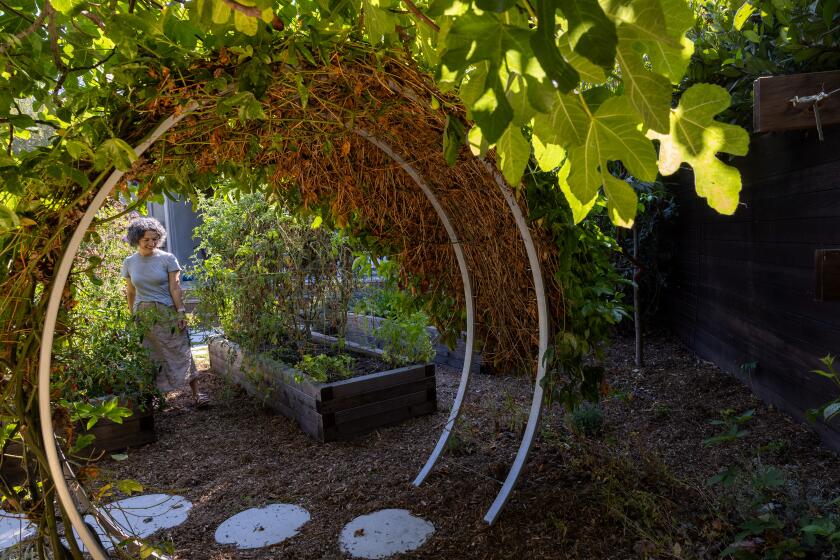More Than 30 Varieties, Hybrids : Shade-Tolerant Holly Makes Attractive Holiday Accent
I was surprised while making the rounds of nurseries to find a dearth of hollies. Some had none and of those available, all looked as though they had been sitting in the nursery for a couple of years.
At one nursery I was told they would have holly in for Christmas, but this information was quickly corrected by the manager, who said that what was coming in was Osmanthus ilicifolius ( ilicifolius means with leaves like holly) with artificial red berries attached. Why this shortage of hollies? It’s not because they won’t grow here. Monrovia Nursery (wholesale only) raises them close by in Azusa in tremendous quantities to ship all over the United States.
I assume it is because we have so many evergreen shrubs and a choice of fast-growing tropicals too. Still for somebody who really likes holly, nothing quite takes the place of it, especially for the holidays. Pyracanthus and cotoneaster, plus the native California holly, Heteromeles arbutifolia , can be substituted, but they do not say “Christmas!” in the same way.
Special Orders
Monrovia Nursery raises 30 varieties of holly, but by no means all varieties. Your local nursery can surely get a holly for you on a special order. Because many hollies are dioecious (having the male pollen flower on one plant and the female on another plant), check to make sure it is self-fertilizing, unless you intend to buy two plants, and even then the male plant will bear no berries.
Some have wondered after buying a holly loaded with berries why it never had any again. It needed a male companion. Having the male and female flowers separated, it is very easy to hybridize, and they often do it on their own. Hollies are polygynous, and one male will take care of a whole harem--even when separated by hundreds of feet. In fact, the male might stray outside his immediate family and fertilize other species of holly, providing they bloom at the same time.
There are so many hollies along with their hybrids that we can name but a few. The most commonly grown in Southern California is Ilex cornuta “Burford.” It has the advantage of being self-pollinating. The leaves do not have as many prickles as some of the other hollies. I.c. “Dazzler” is noted for its large red berries. I.c. “Willowleaf” has more horizontal growth with narrower, slightly twisted leaves.
Typical English Variety
Ilex aquifolium is the typical English holly that is seen on Christmas cards. It comes in many forms, some with variegated foliage in either gold or white. The variegated forms are considered not up to the others in berry production.
“Boulder Creek” and “Sparkler” are both considered generous in supplying berries, with the help of a male plant. The English holly does best on the ocean side of the mountains, because it does not care for a hot dry climate.
The hybrid “Ebony Magic” is new and of unknown parentage, although its dark stems make it appear that there may be some of Mrs. Meserve’s hybrids lurking in its background. It is considered one of the best. Its dark, typical holly leaves and its abundant production of large ( 1/2-inch) berries of bright red have made it popular. It needs a boyfriend.
The uses of holly are many. Of course it makes an excellent accent shrub with its dark leaves and bright berries. It also makes a good thick screening hedge as well as a barrier hedge on account of its prickles. It would also be appropriate in a cutting garden.
Holly grown here is undemanding in its requirements. It has even been used (in Arcadia) as a street tree (Wilson’s holly, not readily available today) with all the reflected heat. If holly had its druthers it would choose fairly moist rich loamy soil with a mulch and protection from the sun at midday. It is very shade-tolerant but needs some direct sun for a good display of berries. (Put the male holly in the shady place.)






